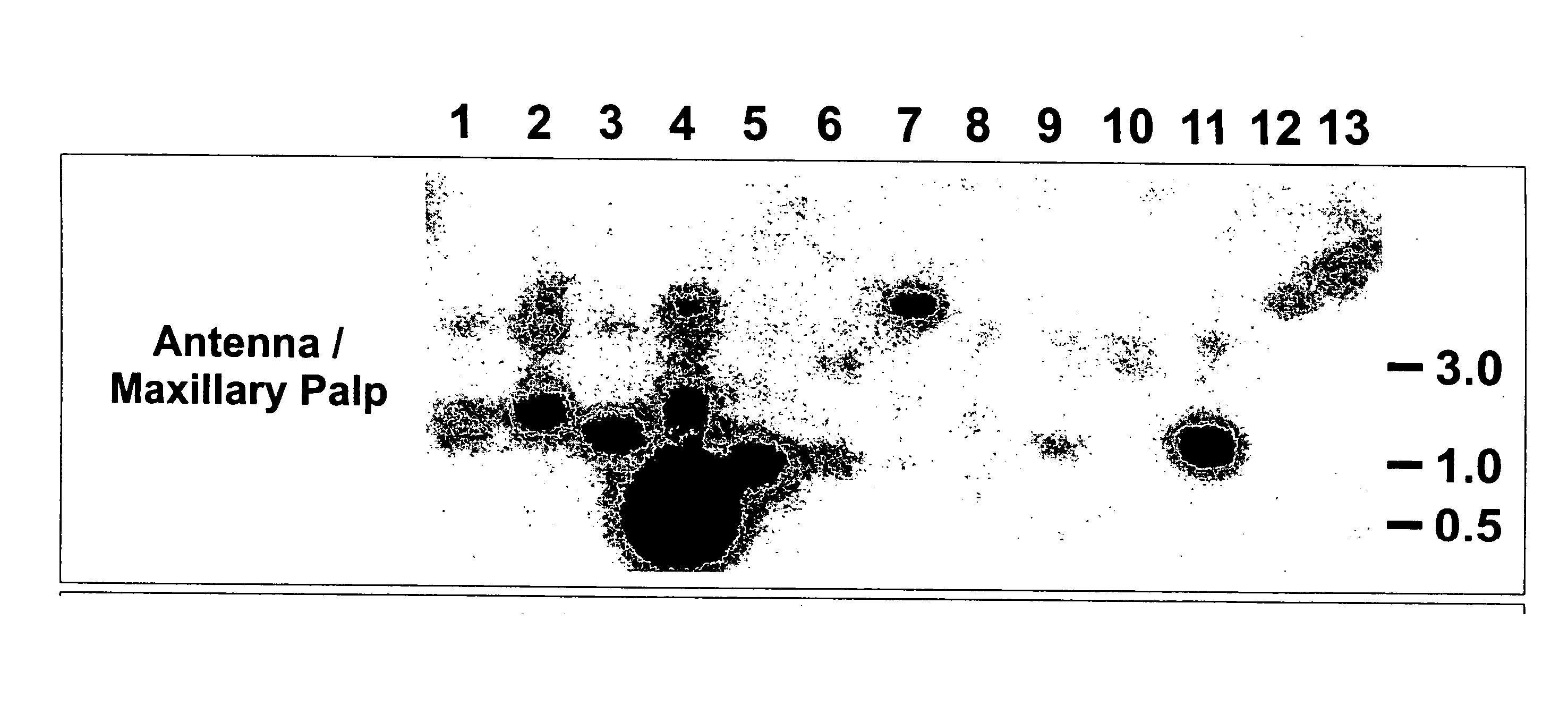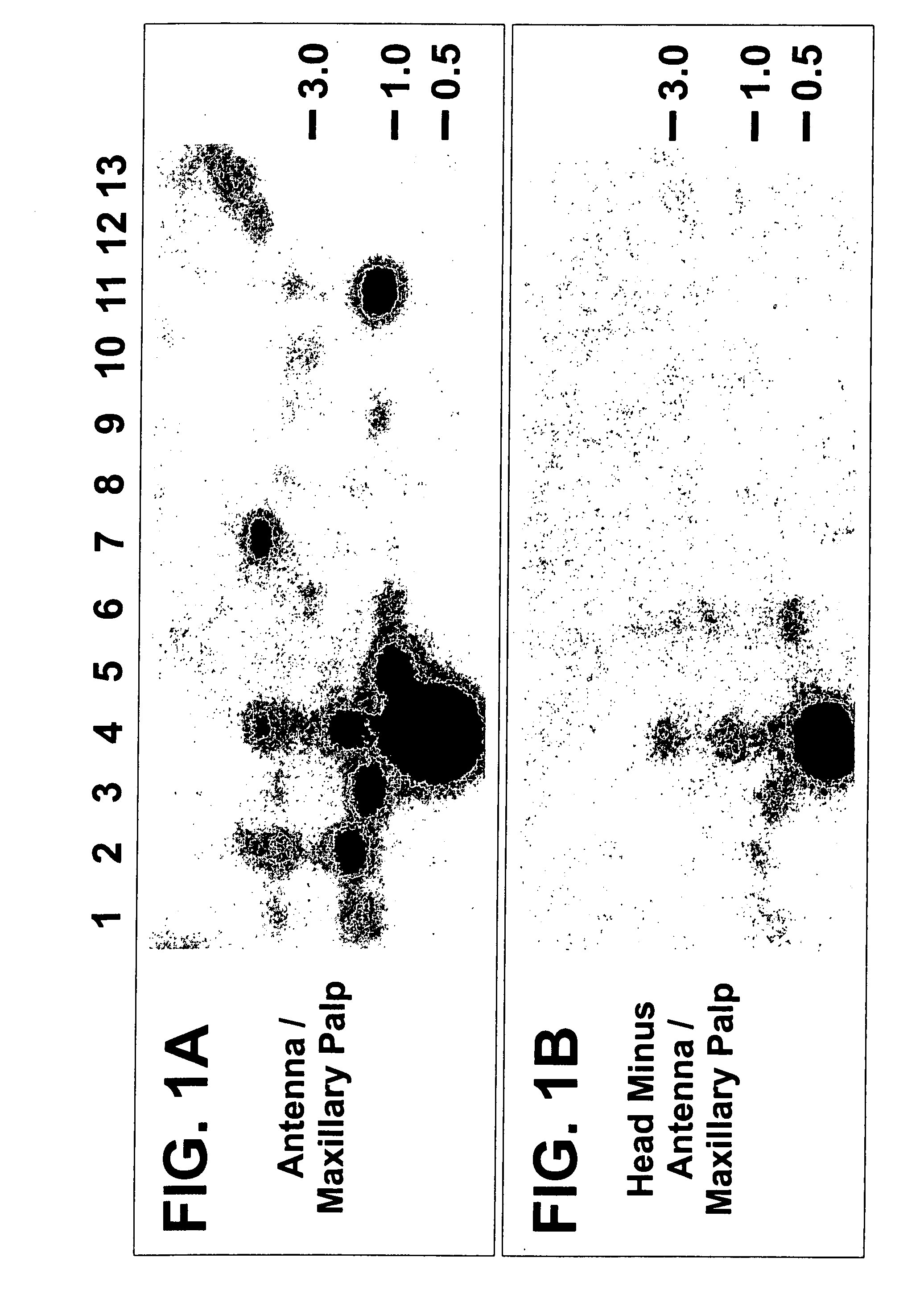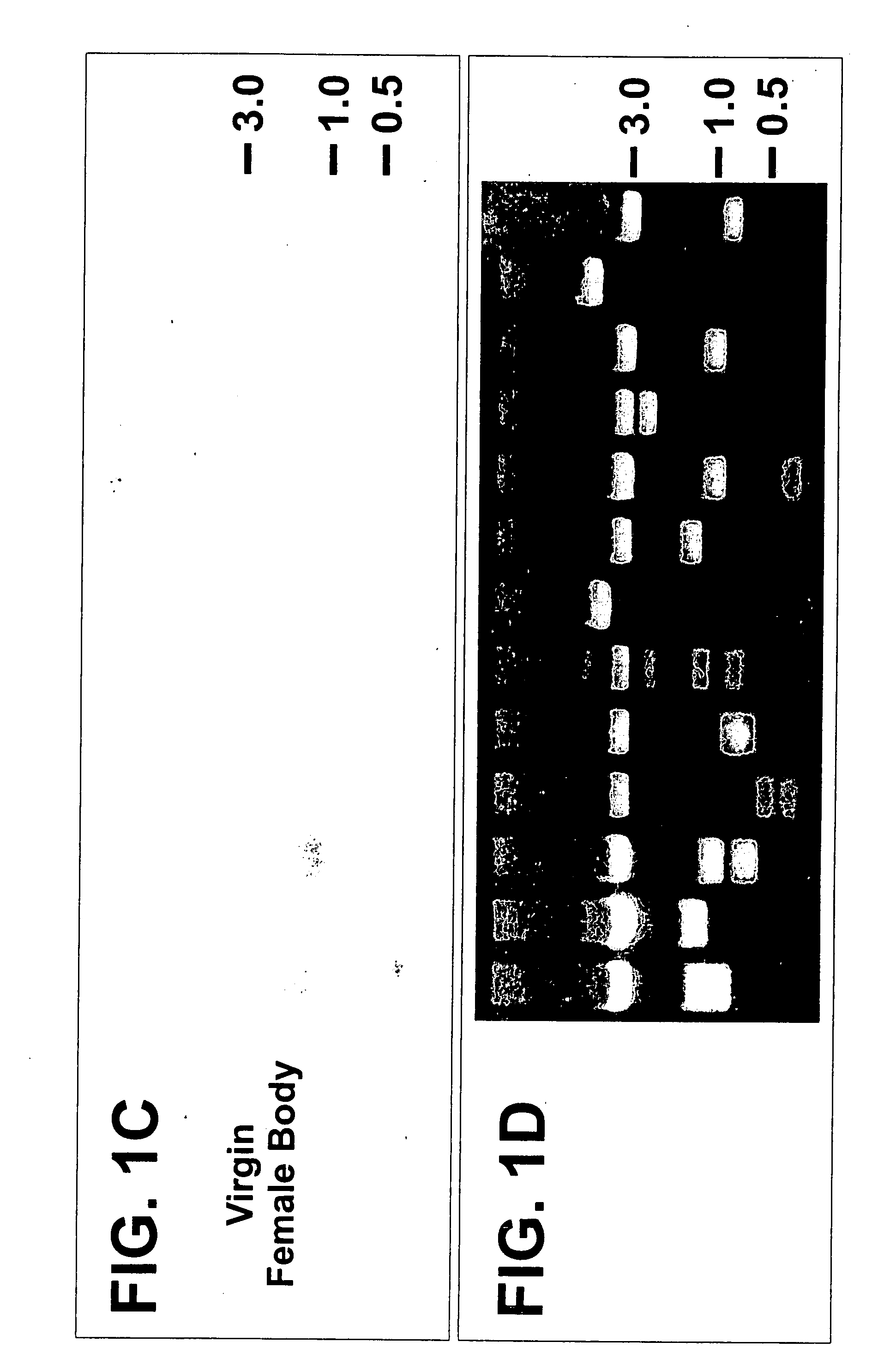Genes encoding insect odorant receptors and uses thereof
a technology of odorant receptors and genes, applied in the field of genes encoding insect odorant receptors, can solve the problems of limited discriminatory power, small number of odorant receptors that are insufficient to recognize, and differences in perceived odor quality, etc., and achieve the effect of inhibiting activity, inhibiting activity, and inhibiting activity
- Summary
- Abstract
- Description
- Claims
- Application Information
AI Technical Summary
Benefits of technology
Problems solved by technology
Method used
Image
Examples
Embodiment Construction
[0067] In order to facilitate an understanding of the Experimental Procedures section which follow, certain frequently occurring methods and / or terms are described in Sambrook, et al. (1989).
[0068] Throughout this application, the following standard abbreviations are used throughout the specification to indicate specific nucleotides: [0069] C=cytosine A=adenosine [0070] T=thymidine G=guanosine.
[0071] This invention provides an isolated nucleic acid molecule encoding an insect odorant receptor. The nucleic acid includes but is not limited to DNA, cDNA, genomic DNA, synthetic DNA or RNA. In an embodiment, the nucleic acid molecule encodes a Drosophila odorant receptor.
[0072] The invention provides an isolated nucleic acid encoding a polypeptide present in an insect odorant receptor which polypeptide comprises seven transmembrane domains and a C-terminal domain, wherein one of the seven transmembrane domains is located within the polypeptide at a position adjoining the C-terminal do...
PUM
| Property | Measurement | Unit |
|---|---|---|
| diameter | aaaaa | aaaaa |
| nucleic acid | aaaaa | aaaaa |
| chemical structure | aaaaa | aaaaa |
Abstract
Description
Claims
Application Information
 Login to View More
Login to View More - R&D
- Intellectual Property
- Life Sciences
- Materials
- Tech Scout
- Unparalleled Data Quality
- Higher Quality Content
- 60% Fewer Hallucinations
Browse by: Latest US Patents, China's latest patents, Technical Efficacy Thesaurus, Application Domain, Technology Topic, Popular Technical Reports.
© 2025 PatSnap. All rights reserved.Legal|Privacy policy|Modern Slavery Act Transparency Statement|Sitemap|About US| Contact US: help@patsnap.com



